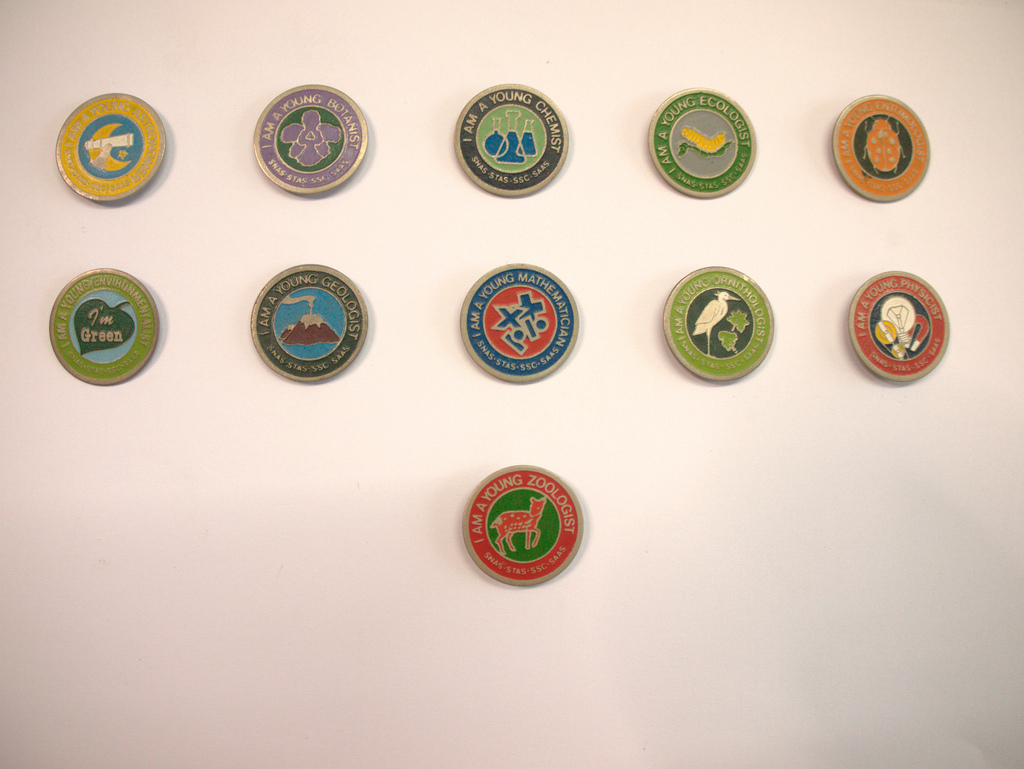Submitted by Chad Duhon on

Last week, the National Association of State Directors of Career and Technical Education Consortium (NASDCTEc) and NOCTI co-hosted a webinar, “Badging 101: The What, The Why & The How.” This webinar examined the concept of open badges and their potential in demonstrating – and validating – students’ skills, knowledge, and competencies. The presentation focused on the basics of badging and potential uses at the national, state, and local level.
Presenting the webinar were:
- Jade Forester, Marketing and Community Manager at the Badge Alliance
- John Foster, CEO of NOCTI
- Marie Perotti, Project Coordinator of CTE TEACH in Colton, Redlands, Yucaipa Regional Occupation Program (CRY-ROP)
- Russ Weikle, State CTE Director at the California Department of Education
The presenters spoke on various aspects of badges, but here are some high level ideas from the webinar.
Badges are adaptable. Jade Forester discussed the application of badges in a variety of settings: higher education, government, K-12 education, corporate and cultural institutions, and afterschool programs. She noted that open badges are representations of both skills and achievements, and can present a detailed description of what someone knows and is able to do. Badges can fit into a broader conversation about competency-based learning, and can even signal personalized learning pathways that differ person to person and student to student. Forester also noted the ability of badges to capture competencies in soft skills along with academic and technical skills.
Badges have the potential to change the educational system. John Foster termed badging “the next disrupter to the educational system.” He noted that badges could be particularly useful to career and technical education (CTE) students as a way to signal competence in skills necessary for a technical workforce. Foster highlighted two recent articles in Techniques magazine on the promise and practicality of digital badges, and described the ongoing NOCTI SkillBadge™ beta project in California, Minnesota, Missouri, Pennsylvania, and Virginia focused on the college credit recommendation badge.
Badge programs have received positive feedback. Marie Perotti shared positive results of the pilot program from a local perspective. A survey of teachers indicated that:
- Students were motivated by the opportunity to receive badges;
- Students entering CTE programs later in the year wanted to try to test for badges;
- Students saw connections and relevance between coursework and future career success; and
- Administrators saw badges as a viable way to collect additional data on student achievement.
She did, however, mention that some potential issues in implementing badging programs could include: training administrators, mentors, and teachers; marketing badges to business and industry; showing students the use and potential benefits of badges; educating parents; and securing staff buy in.
Badges might be able to contribute to state efforts to demonstrate student competencies. Russ Weikle noted that badging is an emerging field with limited research. California participated in NOCTI’s pilot program, and Weikle said he hoped badging would help increase CTE and academic performance. One concern for him is considering how badges could be used in state accountability systems. California has measures on academic performance, but not on career readiness. If students were to graduate career and college ready, what would be the indicators for career readiness and how could badges play a role? From the state perspective, Weikle believes that badges present an opportunity for students to gain something from assessments typically solely used for state accountability.
Other resources shared during the webinar included a “What is a Badge” video and the Digital Me Badge Canvas. The webinar and slides are available online.
Chad Duhon is a senior researcher at the College and Career Readiness and Success Center at AIR.
Photo credit: Flickr

Add new comment